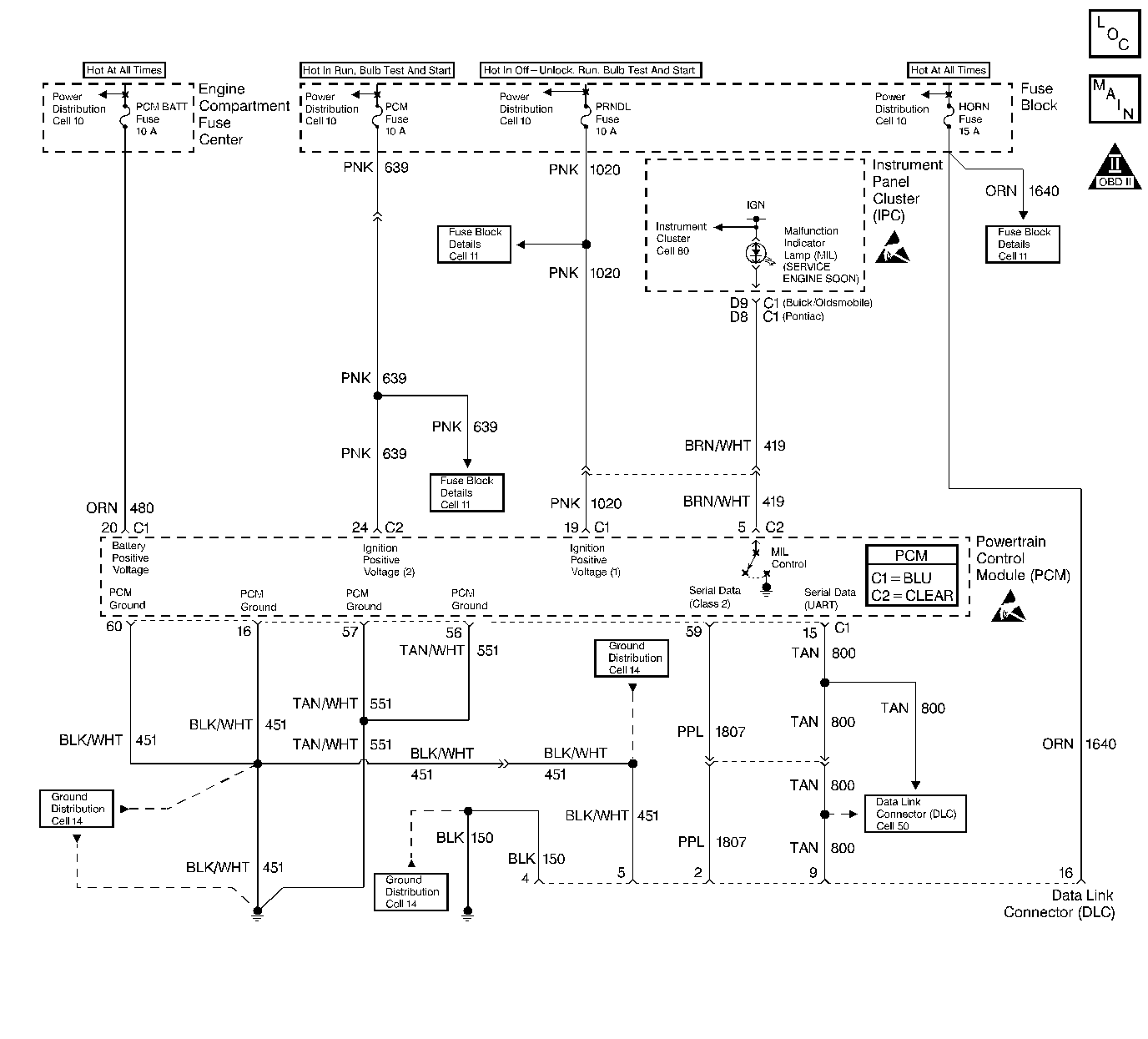
Circuit Description
A Class Il serial data communications system is used on this vehicle to allow various modules to communicate and share information with each other. Each bit of information has one of two lengths: long or short. This allows vehicle wiring to be reduced and the transmission and reception of multiple signals over a single wire. The messages carried on a Class II serial data streams are also prioritized. If two messages attempt to establish communications on the data line at the same time, the message with the higher priority will continue. The message with the lower priority message will wait. If a module cannot respond to the PCM, a DTC is stored.
Conditions for Setting the DTC
The PCM cannot communicate with the Vehicle Theft Deterrent (VTD) Controller.
Action Taken When the DTC Sets
| • | The PCM will record operating conditions at the time the diagnostic fails. This information will be stored in the Freeze Frame and Failure Records buffers. |
| • | A history DTC is stored. |
Conditions for Clearing the MIL/DTC
| • | A history DTC will clear after 40 consecutive warm up cycles without a fault. |
| • | DTC(s) can be cleared by using a scan tool. |
Diagnostic Aids
Attempting to start the vehicle by bypassing the Passlock ll system or substituting parts without performing the password learn procedure may set a DTC P1631.
If no password is received a DTC P1610, P1626 and P1631 may be set.
An intermittent may be caused by a poor connection, rubbed through wire insulation or a wire broken inside the insulation.
Any circuitry, that is suspected as causing an intermittent complaint, should be thoroughly checked for the following items:
| • | Backed out terminals or improper mating. |
| • | Broken locks. |
| • | Improperly formed or damaged terminals. |
| • | Poor terminal to wiring connections. |
| • | Physical damage to the wiring harness. |
| • | Corrosion. |
Test Description
The numbers below refer to the step numbers on the Diagnostic Table.
-
An IPC theft deterrent DTC being set would indicate that the Theft Deterrent System is faulty and not sending a password to the PCM. Refer to Theft deterrent System.
-
After any theft deterrent System parts have been replaced, the PCM must relearn the Password from these components. Refer to Password Learn Procedure.
-
The UART serial data circuit must be OK so the IPC can send the password information to the PCM.
-
Replacement PCM must be reprogrammed. Refer to the latest Techline information for programming procedures.
Step | Action | Value(s) | Yes | No |
|---|---|---|---|---|
1 | Was the Powertrain On-Board Diagnostic (OBD) System Check performed? | -- | ||
2 |
Was an IPC DTC also set? | -- | Go to applicable DTCs | |
Were any Passlock System related components just replaced? | -- | |||
Does the engine start and continue to run? | -- | Go to Diagnostic System Check - Theft Deterrent in Theft Deterrent | ||
Was a problem found? | -- | |||
|
Important: The replacement PCM must be programmed. Replace the PCM. Refer to Powertrain Control Module Replacement/Programming . Is the action complete? | -- | -- | ||
7 |
Does the scan tool indicate that this diagnostic ran and passed? | -- | ||
8 | Check if any additional DTCs are set. Are any DTCs displayed that have not been diagnosed? | -- | Go to applicable DTC table | System OK, Go to Diagnostic Aids |
